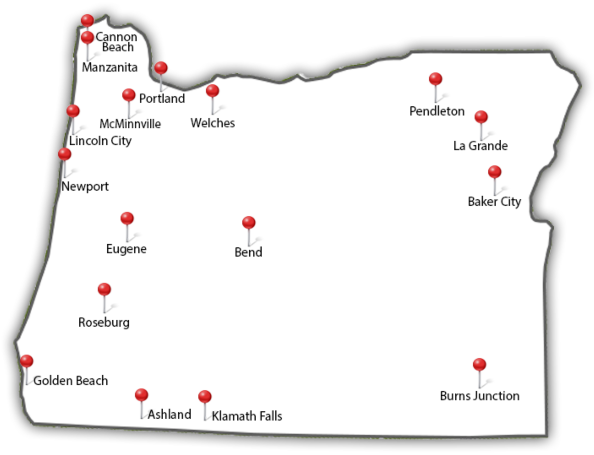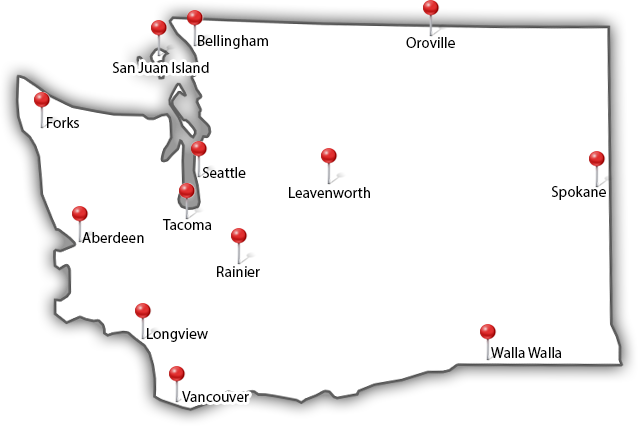Archive for the ‘Tree’ Category
Saturday, June 28th, 2014
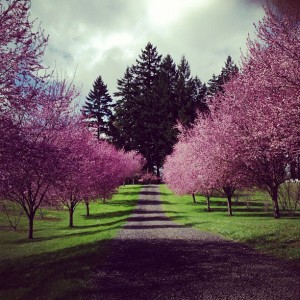
Beautiful trees can add a lot to the value and look of your property. On the same token, trees that aren’t well cared for can detract from the value of your property and actually create a risk for property damage and personal injury.
When you choose an arborist you’re making an investment in the entire value and safety of you and your property.
There are many tree trimming services out there, with many different prices and business models. What’s the difference between all of them and what makes one better than the other?
This article will outline what it means to be a Certified Arborist and why you should always hire a Certified Arborist for all of your tree care needs.
What is a Certified Arborist:
A Certified Arborist is a Tree Care Professional who is certified by the International Society of Arboriculture (The ISA).
Defined by the ISA, Certified Arborists are individuals “who have achieved a level of knowledge in the art and science of tree care through experience and by passing a comprehensive examination developed by some of the nation’s leading experts on tree care.”
What Does It Take To Become a Certified Arborist?
The ISA is an organization formed to ensure that arborists are adhering to the most recent and strict tree care and safety methods. This not only ensures the safety of you and your property, but for the worker as well.
Becoming a Certified Arborist doesn’t just mean that the professional has passed a test when beginning their career. To be a Certified Arborist one must constantly participate in continuing education. Always learning the most recent tree care methods. Renewing their certification every three years.
Being a Certified Arborist means that the professional is always keeping up on the latest safety standards and equipment maintenance protocols. Knowing how to properly use and repair their equipment. Ensuring that your trees are cared for properly and that the worker is properly insured and practices safety at all times.
Does Experience Replace ISA Certification?
Just because a professional has years of experience trimming trees, it doesn’t mean that they are actually practicing correct tree care methods.
Many common historical practices like wound dressing and tree topping are actually quite ineffective and even harmful to trees.
Staying up-to-date on tree infections, pests, equipment safety, roping and climbing practices, aerial rescue methods, tree care science, etc. are all crucial aspects of tree care that are constantly changing and being updated.
Hiring an ISA Certified Arborist means that you will receive the most current tree care methods available from a professional who knows.
High Quality Services:
When you hire a Certified Arborist you know you are employing someone who cares about their business. A professional who takes the time to stay certified and always learn more about their craft.
If you are looking for cut-rate bids on tree care services, chances are, you will get cut rate services. Possibly leading to damaged trees and more costs down the road in repairs and maintenance.
But when you find a Certified Arborists who takes the time to stay trained and up-to-date. Always maintaining their equipment and certifications. You can rest easy knowing that you are making an investment in the long-term health of your trees. In turn investing in the value and safety of your property.
It pays to hire a Certified Arborist.
Where Can I Find a Certified Arborist?
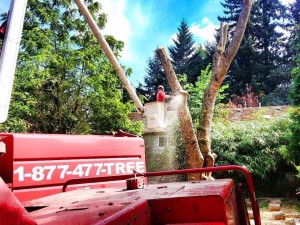 You can always look directly on the ISA website to find a Certified Arborist in your area, as well as, check on a specific Certified Arborist’s credentials.
You can always look directly on the ISA website to find a Certified Arborist in your area, as well as, check on a specific Certified Arborist’s credentials.
If you live in the Pacific Northwest you can contact Northwest Arbor Culture Inc. for all of your tree care needs.
Our professional Certified Arborists have over 30 years of experience caring for trees and provide the highest quality arborist services in the Northwest.
Sunday, June 8th, 2014
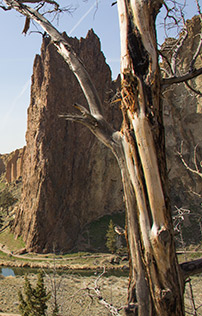
There are many factors that can compromise the health of your tree. Both man-made and natural forces can easily lead to the damage and even death of your landscape. Not only do dying trees create an eyesore in your yard and devalue your property, but they can also pose a threat to the safety of you and your home.
So, how do you know if your tree is dying and what should you do if it is already dead?
This article will describe the symptoms of dead and dying trees and the steps you can take when you know your tree is dead.
Signs that a tree is dead or dying
Several simple signs will generally tell you that your tree is dying or already dead. If you notice that a tree is losing leaves or needles at an incredible rate or that it now has no foliage whatsoever, your tree is most likely dying. Rapid discoloration of foliage is usually the first sign of stress and can ultimately lead to the end of a tree’s life.
Often times the texture and health of tree bark can also be an indicator of the overall health of the tree. The loss of bark or 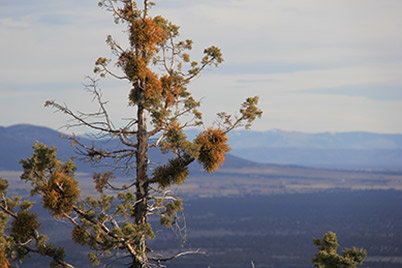 dryness and brittle bark can be a sign of declining tree health.
dryness and brittle bark can be a sign of declining tree health.
If a tree is dying and rotting, you can often feel the tree trunk turning spongy and weakening from the inside. Sudden limb failure, limb cracking and excess foliage loss can also indicate that your tree is near its’ end.
But how can you prevent a tree from dying?
Common causes of tree death
While the signs of tree death and disease are generally seen above ground, the root of the problem usually starts below ground with the roots and soil. Here are some of the common reasons why trees die and ways that you can avoid killing your tree.
Lack of Water or Too Much Water – Often times we associate the death of tree with the lack of water. But as sensitive as trees are to too little water, too much water can pose just as large of a threat. Make sure to water your trees correctly based upon their species as well as your overall climate. Contact your local Certified Arborist if you have any questions about how much to water your trees.
Changing the Soil Grade – We’re not talking about flunking your tree out of class. When you add or take away soil from the area above your trees roots, you greatly impact the flow of water and nutrients to the tree. The primary feeding roots in trees are often found in the top six inches of the soil, so even changing the level of soil around your tree by four to six inches can cause severe stress in your trees and lead to death.
Compacting Soil – Driving cars and heavy machinery on the soil that covers tree roots can quickly kill a tree. Compacted soil doesn’t allow for water and oxygen to circulate through the dirt. Depriving the tree of oxygen and other nutrients in the soil.
Girdling Roots – Often times when tree is grown in a nursery the roots are trimmed to create a compact root ball that makes transplanting easy. Yet, this trimming can often lead to roots twisting around themselves and strangling the tree as the roots tighten and grow. Look for ‘pot bound’ or tightly packed roots before you purchase and plant a nursery tree.
Improper Transplanting – When you transplant a tree there are many things that can go wrong. One common mistake is digging too small or too deep of a hole. This impedes root growth and can choke the tree. A tree should be planted in a hole no deeper than and at least three times the diameter of the root ball.
Another mistake is packing the soil within the hole, as well as, 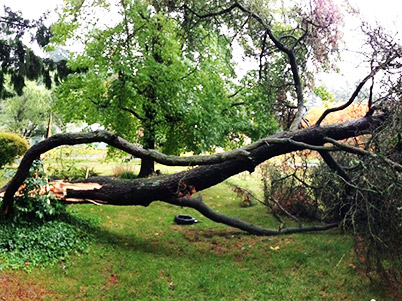 on top of the newly planted tree. Make sure to loosen or scrape the soil on the edges and bottom of the hole. Don’t pack down ‘back-fill’ soil you use to plant the tree. Packed soil will deprive the lower roots from receiving water and oxygen and stunt or kill your tree.
on top of the newly planted tree. Make sure to loosen or scrape the soil on the edges and bottom of the hole. Don’t pack down ‘back-fill’ soil you use to plant the tree. Packed soil will deprive the lower roots from receiving water and oxygen and stunt or kill your tree.
Lastly, when you transplant your tree pay close attention to the root ball. Always remove and unwrap any burlap and twine that may be tied to the tree. Help the roots spread by gently loosening and separating the root ball before planting the tree.
What Do I Do If My Tree Is Dead?
Many times, when you see the signs of a dying tree it may be too late to salvage. If your trees are dead and dying you have several options left to help keep you and your home safe and beautiful.
Cabling – If a tree is old, sick, or just unstable, you can mount stabilizing metal cables and braces to the tree. This can stop a tree from splitting or falling over during the rest of its’ life.
Tree Removal – If a tree is dead it can quickly become a falling hazard. Removing a dead tree can keep you and your home safe before any heavy winds or natural forces like gravity send the tree toppling to the ground.
In an earlier blog post we discussed the dangers of DIY tree removal. Make sure to play it safe and call a professional Certified Arborist for all your tree removal needs.
Stump Grinding – Once you cut down a tree you can remove the stump to get rid of that ugly reminder of your fallen tree. Northwest Arbor Culture Inc. offers stump grinding services that safely and effectively remove your stump. Allowing you to have 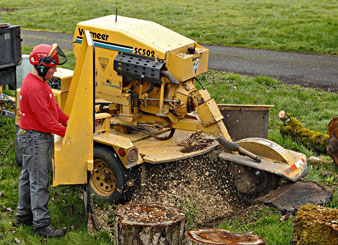 an open yard and reuse the chipped wood for garden and tree mulch.
an open yard and reuse the chipped wood for garden and tree mulch.
The professionals at Northwest Arbor Culture Inc. offer tree bracing, cabling, large tree removal, and stump grinding services across the Pacific Northwest. We are known for providing quality services at a fair price and have over 30 years of landscaping and tree care experience.
Contact us or give us a call today at (503) 538-8733 for all of your tree care needs.
Have you had a dead or dying tree in your yard? Tell us how you dealt with your tree in the comments section below.
Tuesday, May 20th, 2014
Bugs play a very important role in the health of your trees and garden.
Pollinators, like bees and butterflies, allow the plants around your home to flower and produce fruit. Ground beetles eat vegetable munching slugs and snails in your garden. Spiders help reduce the population of disease spreading mosquitoes and flies.
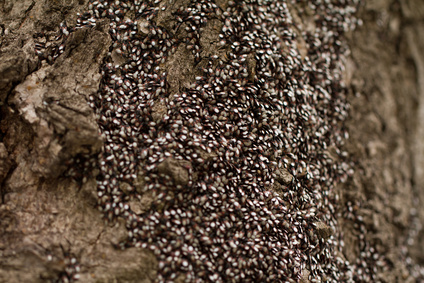 While bugs can be beneficial to our fruit trees and gardens, there are also many critters that can cause extensive damage and death to your plants.
While bugs can be beneficial to our fruit trees and gardens, there are also many critters that can cause extensive damage and death to your plants.
This article will educate you about several common plant pests of the Pacific Northwest. We will help you identify some of the symptoms of harmful infestations. Reviewing the steps you can take to defend your garden and landscape from pest damage.
Aphids
Aphids are one of the most common plant pests. They suck the sap from trees and plants causing the leaves to curl and die. Aphids also release excess sap from their bodies often causing plants to mold.
These frequent bugs come in several different colors and can affect any plant from roses to hardwood trees. Their bodies are usually 1/10th of an inch long and are easy to spot on the leaves and stem of your plants. Aphids have a short reproductive period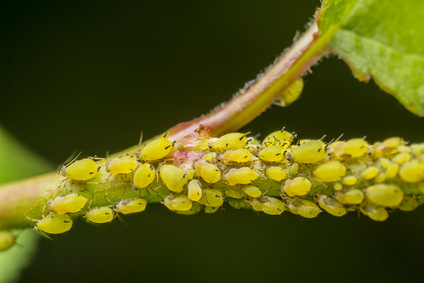 (10-14 days) and a population can explode in no time.
(10-14 days) and a population can explode in no time.
But how can you hope to control an Aphid outburst in your yard?
Treatment – A small infestation can be wiped away with a cloth or blasted off with a garden hose. Sprays made of household soap and water or garlic oil can help prevent aphid growth as well. Avoid insecticides that can kill helpful bugs in your garden.
Spider Mites
Spider Mites are tiny mites that feed on the leaves of many different plants. With eight legs and miniature bodies, they pierce the protective surface of leaves and create tiny holes. The plant then loses water through the open holes causing the leaves to dry out and die.
These bugs are so tiny that the best way to detect them is by holding a piece of white paper under the suspected infestation. After gently tapping on the leaf or branch you will be able to see tiny black flecks that are moving on the paper.
Spider Mites can infest indoor and outdoor plants of all kinds. In the Northwest, Spruce Spider Mites are can be found on many of our common conifer trees like Doug-fir, pine and spruce. Also infesting arborvitae and other common ornamental shrubs.
Treatment – Similar to Aphids spider mites can be hosed off of plants and sprayed with a soapy water mix. Spruce Spider Mites require an addition application of ‘horticultural oil’ to kill eggs surviving through the winter.
Insect Borers
Common insect borers include the Asian Longhorned Beetle and the Bronze Birch Borer. This type of large bug tunnels into the trunk and branches of plants and trees. Often attacking hardwood trees such as maples, ash, and elm. The bugs then lay eggs in their tunnels effectively blocking off water and nutrient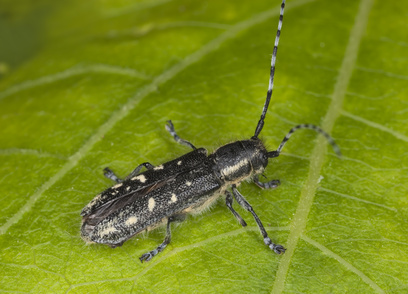 s from traveling through the tree.
s from traveling through the tree.
An infestation can be identified by large holes in and sawdust at the base of your tree. Yet, often times it can be too late to save a tree once it is infested.
Treatment – Insecticides can kill insect borers but are not always very effective. The best way to avoid an infestation is to keep your plants and trees healthy.
Insect borers and many other pests are attracted to dead and dying wood. If you prune, water, and fertilize your trees, they can naturally fight against insect borer infestation. Make sure to remove any fallen branches and dead wood around your trees that might also attract these pests to your healthy plants.
Preventing Insect Infection
There are many different harmful bugs that can infest your trees and garden. But the key to preventing general insect infestation is keeping your plants healthy. A healthy garden harbors a diverse population of beneficial bugs. Many of which eat and destroy the common insect pests we discussed in this post.
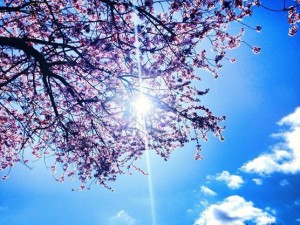 Keeping your plants watered, fertilized, pruned, and mulched can help maintain your yards natural defenses against invading insects.
Keeping your plants watered, fertilized, pruned, and mulched can help maintain your yards natural defenses against invading insects.
But, If you find an infestation in your yard that is out of your control, don’t hesitate to call a professional. The experts at Northwest Arbor Culture Inc. are not only arborists, but master gardeners, as well. We know how to control any infestation and can help you salvage your plants and trees. Before it’s too late.
Have you ever had a insect infestation in your yard? Let us know the methods you used and the challenges you experienced in the comments section.
Friday, May 9th, 2014
Getting To The Root Of The Problem
The taste of a fresh apple picked right off the branch in your back yard. The fragrance of cherry blossoms in full bloom. Relaxing 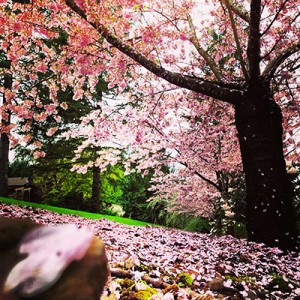 with a loved one in the shade of your weeping willow.
with a loved one in the shade of your weeping willow.
Trees are a big part of our lives, especially here in the Pacific Northwest. We have a special place in our hearts for forests and the beauty that trees bring to our cityscapes.
But there can be a costly side to all of that greenery. If not planned and planted properly, tree roots can cause extensive damage to sewers, sidewalks, foundations, and landscapes in general.
Read this post to learn why trees cause so much damage to our homes and what you can do to prevent costly repairs and removals on your property.
Beneath the Surface
Roots are the foundation of a tree. Providing crucial support, water, and nutrients that a tree needs to survive. But because they are underground, many people don’t consider how widespread and deep roots travel when planting near their homes.
Picture the tallest tree in your yard.
Now imagine that the roots spreading from it are twice as long as the height of the tree.
Roots grow in search of water and nutrients and seek out the nearest source. Which can often be your drainage or septic system.
The effect roots have on your landscape and soil are great. Some tree roots can suck upwards of 200 gallons of water a day from the surrounding soil. Causing the soil to dry and contract if not properly watered.
But how can a plant affect something as strong as metal pipes or a concrete foundation?
Slow and Steady
Root growth can cause lots of damage to your home in many different ways. Here are some of the most common problems and what causes them.
Clogged Sewers and Drainage Pipes
Standard drainage pipes have holes in them to allow waste water from your home to seep into the ground. Roots in search for water can easily grow into these holes. Clogging and even completely blocking pipes.
Sidewalks and Cement Slabs
Roots can easily grow in the space under sidewalks and cement patio slabs. When the root matures and thickens, it lifts the cement causing it to strain and crack under the pressure.
Building Foundations
There’s common misconception that roots can penetrate poured concrete foundations and cause damage. In reality, it is the amount of water that roots suck from the soil around a foundation that will cause the soil to dry and contract. This movement of soil causes instability around the foundation and leads to possible damage.
Landscaping
Trees planted in landscape arrangements can quickly grow and force out other smaller bushes and plants. Ruining a carefully planned landscape arrangement and replacing ornamental plants with exposed and gnarled tree roots.
But if roots are so invasive and persistent, how can I ever stop them from damaging my property?
Dealing With The Damage
There are many different products and methods out there to help you unclog drains and destroy root systems.
Plumbers often recommend pouring toxic chemicals down your drain to kill tree roots. Or in some cases, use a long tool called an ‘auger’ that travels down your drain and actually saws away the roots in your sewage system.
These methods are generally only quick fixes and can lead to contaminated soil and sick trees.
Some landscapers will physically cut invasive tree roots and install a metal barrier. Stopping the roots from growing in that direction. This practice can severely damage or kill trees. Possibly causing the tree to be unstable and susceptible to blowing over in heavy winds.
But how can you avoid all of these expensive and time consuming procedures?
“An Ounce of Prevention Is Worth A Pound Of Cure”
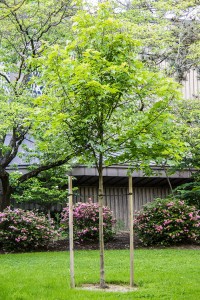 The wisdom of Benjamin Franklin can be applied to many situations including this one. Preventing root damage before it begins is the best alternative to ever dealing with clogged drains and cracking concrete.
The wisdom of Benjamin Franklin can be applied to many situations including this one. Preventing root damage before it begins is the best alternative to ever dealing with clogged drains and cracking concrete.
Taking the time to plan the location and type of tree you plant on your property can save you a lot of time, money, and heartache.
Avoiding species like willows, maples, and aspens can help limit invasive root growth. Also, planting trees at least 10 feet from your foundation, sidewalks, and concrete slabs will help prevent structural damage and concrete cracking in the future.
Hire A Professional
When you hire a skilled, Certified Arborist you will benefit from their training and wisdom.
The experts at Northwest Arbor Culture Inc. have over 30 years of landscaping and tree care experience. We will help you plan and plant your trees so that you get the most out of your landscape while keeping you and your home safe.
Give us a call today at (503) 538-8733 to learn how we can help you with all of your landscaping and tree care needs across the Pacific Northwest.
Are tree roots damaging your home or landscape? Tell us your tree root stories in the ‘comments section’ below.
Friday, April 25th, 2014
TIMBERRR!
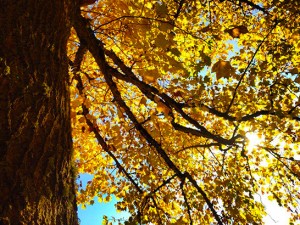 We’ve all wanted to channel our inner lumberjack and chop down a tree. The ponderosa that’s been blocking your view of the mountains is begging to be taken out.
We’ve all wanted to channel our inner lumberjack and chop down a tree. The ponderosa that’s been blocking your view of the mountains is begging to be taken out.
How hard could it really be?
Just grab your chainsaw and a buddy. You’ll be rid of that tree in no time.
Well, we’re here to tell you that’s just the sort of thinking that can get you seriously injured or even killed. An average of 80 people die in the United States each year due to tree care accidents. Countless others are injured.
This post will highlight some of the most common mistakes people make when trimming and chopping down trees.
We hope after reading this you will see the overwhelming advantages to hiring a professional tree service like Northwest Arbor-Culture Inc. for all your tree care needs.
Power Line Problems:
Heavy storms and powerful winds can cause trees to fall or lean against nearby power lines.
Many homeowners make the mistake of attempting to trim or drop trees away from the line hoping that they can prevent a tree or dead branch from falling on their home or car.
Power lines are not something to mess with. According to Preservation Tree, an electrical arc from a power line contains 25,000 watts of power reaching 2000 degrees F.
That’s a lot of power!
You should never touch a power line or any tree touching a power line. Even getting close to downed lines can be dangerous.
Power can travel from the downed line and through the ground, electrifying the area around it. One person died when he touched chipper 20 feet away from the source of the electricity.
Always call a city electrical official or a professional arborist when you notice a downed power line or fallen tree. Never attempt to fix electrical problems on your own.
Risky Heights:
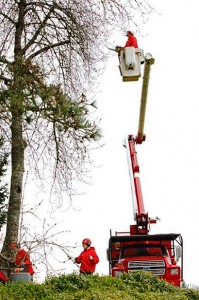 Many DIY tree trimmers run serious risks when they climb trees and ladders. Even falling from a small height can cause serious injury or death.
Many DIY tree trimmers run serious risks when they climb trees and ladders. Even falling from a small height can cause serious injury or death.
People can be hurt when a supporting branch breaks and causes them to fall the ground. Also, human error often causes safety equipment to fail.
One man, who had accidentally cut through his safety line while sawing a branch, fell 50 feet to his death after leaning back to take a rest.
If you think a ladder will solve your height problems, reconsider. Ladders can be very unstable. It is easy to slip and fall from a ladder if you are stretching and straining while working at a high height. Using a chainsaw or power tools from a ladder is enough to make even a professional cringe.
That’s why experts often use bucket lifts to allow them to access even the tallest of branches in a safe way.
Avoid risky heights and dangerous drops. Let a professional Arborist with the proper tools help you trim your tall branches.
Chainsaw Injuries:
Sure, it looks easy to fire up a chainsaw and hack away at a tree trunk. But, there is a lot more to it than meets the eye.
Chainsaws are very powerful and dangerous tools. They can be very unpredictable and even the slightest contact with a moving 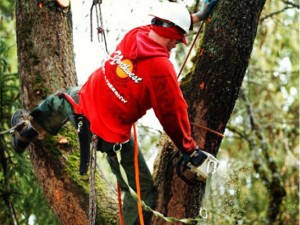 chain can cause serious injury or death.
chain can cause serious injury or death.
Inexperienced operators most commonly are injured because of incorrectly cutting in to a piece of wood, allowing the tip of the bar to be pinched causing ‘kickback’. In blink of an eye the saw kicks back and rapidly lunges back towards the operator. Kickback is the leading cause of chainsaw injury.
36,000 people are injured in chainsaw accidents every year. Don’t be one of them.
Contact a professional arborist and make sure you don’t become another safety statistic.
Falling Trees:
Finally, one of the most obvious dangers of cutting down a tree is the risk of the tree falling on you or someone else.
Trees contain a huge amount of water, foliage and wood weight that can crush homes and vehicles. A ¾ inch diameter branch 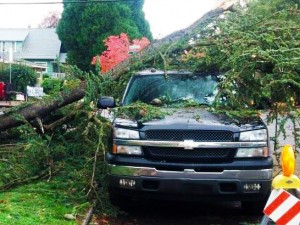 falling from a tree can cause serious injury and death.
falling from a tree can cause serious injury and death.
When felling a tree, the angle of your cut can usually determine the direction the
tree will fall. But, factors like wind, slope, wood-rot, and nearby trees can cause a
tree to fall in unwanted directions.
Also, a common phenomenon known as ‘barber chair’ happens when a tree splits and violently kicks back before it is completely cut.
Trees are large and powerful objects. If not cared for properly trees can become a liability instead of an asset to your property.
Our 30 years of professional knowledge and experience ensures that we get the job done right and within your budget.
The staff Northwest Arbor-Culture Inc. continuously exceed industry standards of excellence and upholds our philosophy of preservation, safety, and aesthetic enhancement.
Contact a Professional: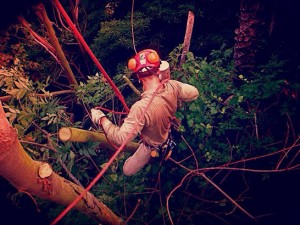
Many things can go wrong when trimming and cutting down trees. It takes a true expert to safely remove a tree.
Make sure that you asses the risks involved with tree trimming and removal before you consider beginning any tree care project. Hopefully you will see that it is always better to call in a professional service like Northwest Arbor-Culture Inc. to safely provide any tree care services that you need.
Have you ever attempted to trim trees on your own? Let us know what tree trimming challenges you’ve had in the ‘comments section’.



 You can always look directly on the ISA website to find a Certified Arborist in your area, as well as, check on a specific Certified Arborist’s credentials.
You can always look directly on the ISA website to find a Certified Arborist in your area, as well as, check on a specific Certified Arborist’s credentials.






 dryness and brittle bark can be a sign of declining tree health.
dryness and brittle bark can be a sign of declining tree health. on top of the newly planted tree. Make sure to loosen or scrape the soil on the edges and bottom of the hole. Don’t pack down ‘back-fill’ soil you use to plant the tree. Packed soil will deprive the lower roots from receiving water and oxygen and stunt or kill your tree.
on top of the newly planted tree. Make sure to loosen or scrape the soil on the edges and bottom of the hole. Don’t pack down ‘back-fill’ soil you use to plant the tree. Packed soil will deprive the lower roots from receiving water and oxygen and stunt or kill your tree. an open yard and reuse the chipped wood for garden and tree mulch.
an open yard and reuse the chipped wood for garden and tree mulch. While bugs can be beneficial to our fruit trees and gardens, there are also many critters that can cause extensive damage and death to your plants.
While bugs can be beneficial to our fruit trees and gardens, there are also many critters that can cause extensive damage and death to your plants. (10-14 days) and a population can explode in no time.
(10-14 days) and a population can explode in no time. s from traveling through the tree.
s from traveling through the tree. Keeping your plants watered, fertilized,
Keeping your plants watered, fertilized,  with a loved one in the shade of your weeping willow.
with a loved one in the shade of your weeping willow.

 The wisdom of Benjamin Franklin can be applied to many situations including this one. Preventing root damage before it begins is the best alternative to ever dealing with clogged drains and cracking concrete.
The wisdom of Benjamin Franklin can be applied to many situations including this one. Preventing root damage before it begins is the best alternative to ever dealing with clogged drains and cracking concrete. We’ve all wanted to channel our inner lumberjack and chop down a tree. The ponderosa that’s been blocking your view of the mountains is begging to be taken out.
We’ve all wanted to channel our inner lumberjack and chop down a tree. The ponderosa that’s been blocking your view of the mountains is begging to be taken out. Many DIY tree trimmers run serious risks when they climb trees and ladders. Even falling from a small height can cause serious injury or death.
Many DIY tree trimmers run serious risks when they climb trees and ladders. Even falling from a small height can cause serious injury or death. chain can cause serious injury or death.
chain can cause serious injury or death. falling from a tree can cause serious injury and death.
falling from a tree can cause serious injury and death.

